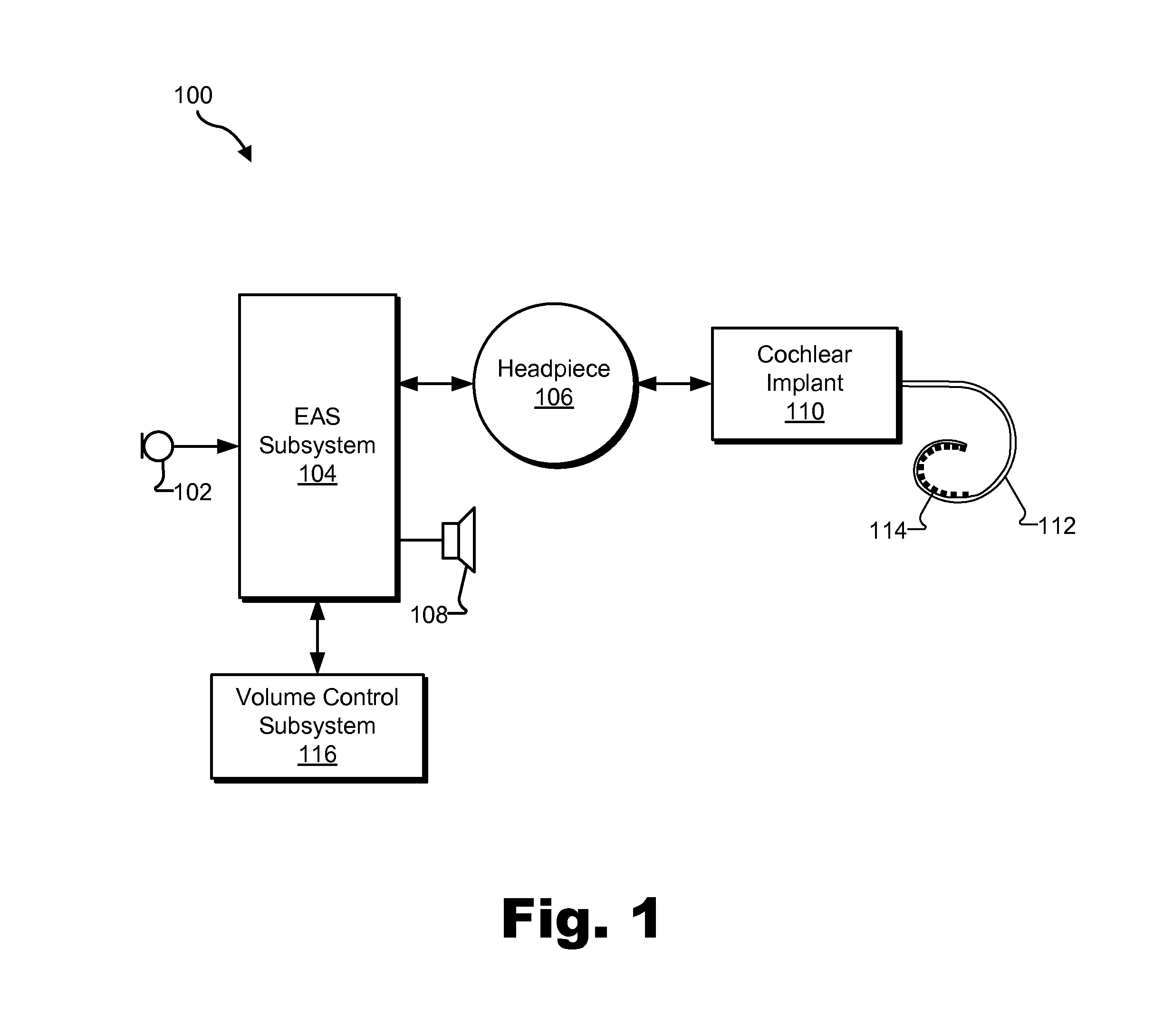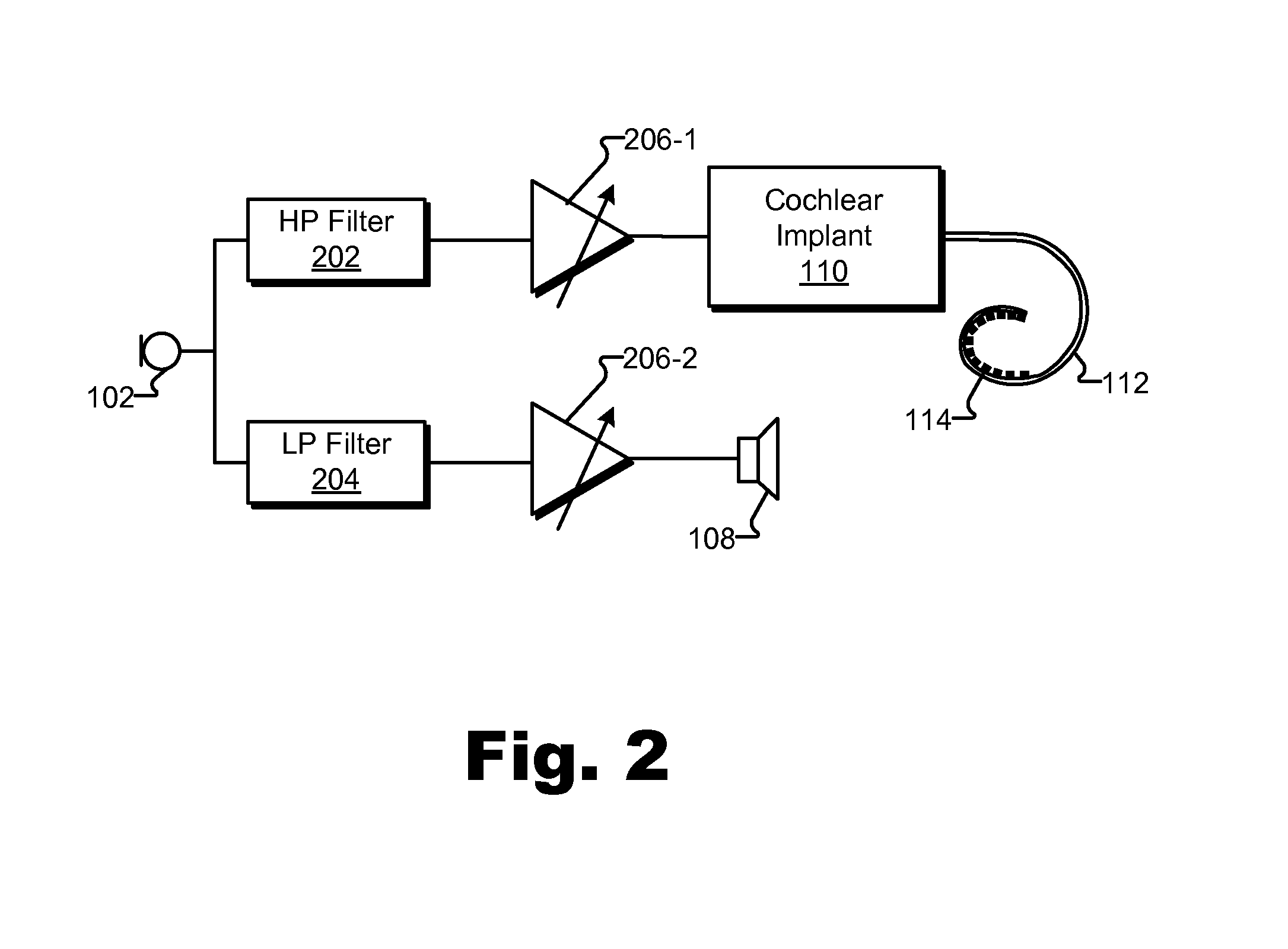Independent Volume Control in Electro-Acoustic Stimulation Systems
a technology of electro-acoustic stimulation and independent volume control, which is applied in the direction of deaf aid adaptation, physical therapy, therapy, etc., can solve the problems of conductive hearing loss, impeded normal mechanical pathways for sound to reach the cochlea, and impeded sound pathways
- Summary
- Abstract
- Description
- Claims
- Application Information
AI Technical Summary
Benefits of technology
Problems solved by technology
Method used
Image
Examples
Embodiment Construction
[0016]Systems and methods for independent volume control in electro-acoustic stimulation (“EAS”) systems are described herein. In some examples, an EAS subsystem is configured to direct a cochlear implant to apply electrical stimulation representative of audio content included in a first frequency band (e.g., a “high” frequency band) to a patient. The EAS subsystem may be further configured to direct a receiver to apply acoustic stimulation representative of audio content included in a second frequency band (e.g., a “low” frequency band) to the patient. The frequency bands may be selected based on the hearing loss of the patient or a patient group. A volume control subsystem may be communicatively coupled to the EAS subsystem and configured to facilitate independent control of a volume associated with the electrical stimulation and a volume associated with the acoustic stimulation.
[0017]For example, the volume control subsystem may include a first volume control mechanism configured...
PUM
 Login to View More
Login to View More Abstract
Description
Claims
Application Information
 Login to View More
Login to View More - R&D
- Intellectual Property
- Life Sciences
- Materials
- Tech Scout
- Unparalleled Data Quality
- Higher Quality Content
- 60% Fewer Hallucinations
Browse by: Latest US Patents, China's latest patents, Technical Efficacy Thesaurus, Application Domain, Technology Topic, Popular Technical Reports.
© 2025 PatSnap. All rights reserved.Legal|Privacy policy|Modern Slavery Act Transparency Statement|Sitemap|About US| Contact US: help@patsnap.com



